The Significance of Rituals and Ceremonies in Native American Mythology
Native American mythology is rich with diverse stories, beliefs, and rituals that are deeply rooted in their cultural traditions. These rituals and ceremonies hold great importance and serve various purposes in their communities. From forging a spiritual connection with the divine to preserving and passing down ancestral traditions, these rituals play a crucial role in Native American society. Additionally, Native American rituals encompass a wide range of practices, such as vision quests, sweat lodges, and powwows, each with its own symbolism and significance. These rituals often involve sacred objects, animal spirits, and natural elements, which add a profound dimension to their spiritual experiences. These rituals and ceremonies continue to hold contemporary relevance, as they promote healing, balance, and a sense of harmony in today’s fast-paced world. In this article, we will explore the deep significance of rituals and ceremonies in Native American mythology, shedding light on their cultural significance, symbolism, and healing properties.
Contents
- The Importance of Rituals and Ceremonies
- Cultural Significance
- Types of Native American Rituals and Ceremonies
- Symbolism and Elements in Native American Rituals
- Role of Rituals and Ceremonies in Healing and Balance
- Contemporary Relevance of Native American Rituals and Ceremonies
- Conclusion
-
Frequently Asked Questions
- 1. What is the significance of rituals and ceremonies in Native American culture?
- 2. How do rituals and ceremonies connect Native Americans with their spirituality?
- 3. Why is it important to pass down traditions through rituals and ceremonies?
- 4. How do rituals and ceremonies promote unity within Native American communities?
- 5. What are some common types of Native American rituals and ceremonies?
- 6. What role do sacred objects play in Native American rituals?
- 7. How do animal spirits factor into Native American rituals?
- 8. Why are natural elements important in Native American rituals?
- 9. How do rituals and ceremonies contribute to healing and balance?
- 10. How are Native American rituals relevant in contemporary times?
- References
-
Frequently Asked Questions
- What is the role of rituals and ceremonies in Native American mythology?
- Why are rituals and ceremonies important in Native American culture?
- What is the cultural significance of rituals and ceremonies in Native American mythology?
- What is the purpose of vision quests in Native American rituals?
- What is the significance of sweat lodges in Native American ceremonies?
- What are powwows and their significance in Native American culture?
- What are sacred objects and their symbolism in Native American rituals?
- How do animal spirits play a role in Native American rituals?
- What natural elements are commonly incorporated into Native American rituals?
- Why are rituals and ceremonies still relevant in contemporary Native American culture?
- References
- Read More
The Importance of Rituals and Ceremonies
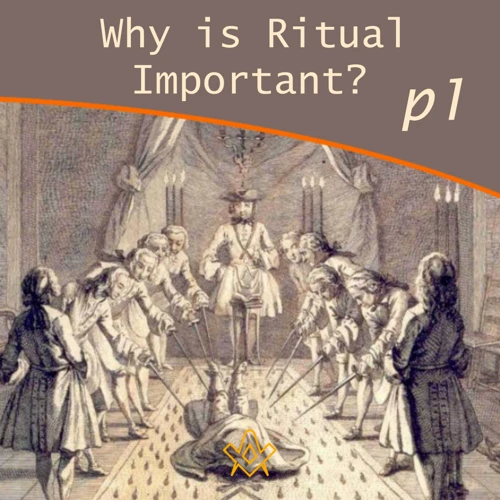
Rituals and ceremonies have a profound significance within Native American mythology, playing a central role in connecting individuals with their spirituality, ancestors, and the natural world. These practices are deeply ingrained in Native American culture and are considered essential for maintaining a sense of identity and balance within their communities.
One of the primary reasons rituals and ceremonies hold such importance is their ability to establish a spiritual connection. Through these practices, individuals can commune with higher powers and gain guidance, wisdom, and protection. The rituals act as a gateway to the divine, allowing participants to engage in sacred conversations with their gods and spirits. This spiritual connection is seen as crucial for personal growth, understanding one’s purpose, and finding support in times of need.
Another key aspect of rituals and ceremonies is the passing down of traditions from one generation to the next. Native American cultures place great value on continuity, and these practices serve as a means to preserve their ancestral knowledge and wisdom. The rituals become a vehicle for transmitting cultural, spiritual, and historical traditions, ensuring that the customs and values of their ancestors continue to live on. This passing down of traditions helps foster a sense of belonging and community cohesion, as individuals come together to honor their shared heritage.
Rituals and ceremonies act as foundations for social interactions within Native American communities. Whether it is a birth, coming of age, marriage, or death, these important milestones are marked by specific ceremonies that bring people together in celebration, mourning, or reflection. These rituals create a sense of unity and solidarity among community members, reinforcing their shared values and strengthening social bonds.
The importance of rituals and ceremonies in Native American mythology cannot be overstated. They provide a means for individuals to establish a spiritual connection, serve as a conduit for passing down traditions, and foster unity and social cohesion within their communities. These practices form an integral part of Native American culture and continue to be cherished and honored to this day.
Cultural Significance
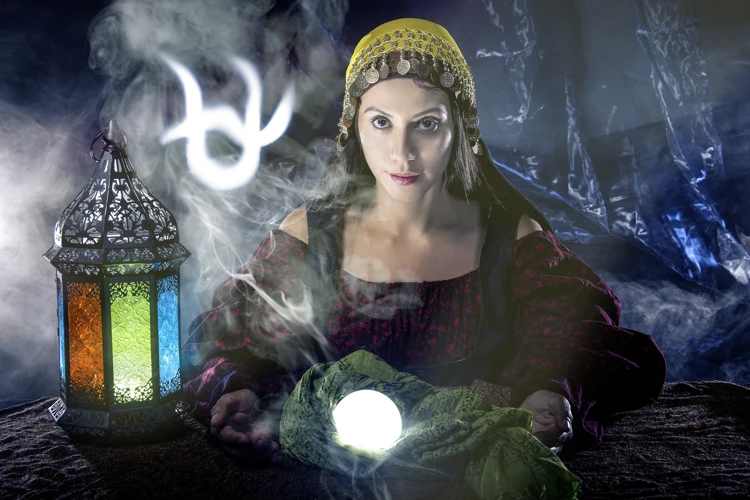
Native American rituals and ceremonies hold immense cultural significance, serving as a cornerstone of their belief systems and ways of life. These practices are deeply intertwined with the fabric of Native American culture, representing their connection to the spiritual realm, ancestors, and natural world. The cultural significance of these rituals lies in the profound spiritual connection they offer, providing individuals with a sense of purpose, guidance, and meaning. These ceremonies also serve as a means of passing down traditions from one generation to another, preserving the rich cultural heritage of Native American communities. By participating in these rituals, individuals actively engage with their cultural identity and strengthen their sense of belonging within their tribe. These ceremonies foster a deep appreciation for nature and the environment, emphasizing the interconnectedness between humans and the natural world. Ultimately, the cultural significance of Native American rituals and ceremonies lies in their ability to maintain cultural heritage, build community, and cultivate a profound connection with the spiritual and natural realms.
Spiritual Connection
The spiritual connection is at the heart of Native American rituals and ceremonies. These practices provide a direct means for individuals to connect with the divine, their ancestors, and the spiritual realms.
1. Communion with the Divine: Through rituals and ceremonies, individuals seek to establish a profound connection with higher powers. They believe in the existence of gods, spirits, and other celestial beings who influence their lives. These rituals serve as a means to communicate with these divine entities, seeking guidance, protection, and blessings. By engaging in sacred acts, participants open themselves up to the spiritual energies and vibrations of the universe, fostering a direct line of communication with the divine.
2. Seeking Wisdom and Insight: Native American rituals and ceremonies often involve practices such as meditation, prayer, and contemplation. Participants engage in deep introspection to gain wisdom, insight, and clarity about their purpose in life. They seek spiritual enlightenment, hoping to receive revelations that can guide their actions and decisions. The rituals create a sacred space where individuals can quiet their minds, connect with their inner selves, and open their hearts to receive messages from the spiritual realm.
3. Harmony with the Natural World: Native American cultures have a deep reverence for nature and its inherent spiritual presence. They believe that everything in the natural world possesses a spirit, including animals, plants, and natural elements. Rituals and ceremonies allow individuals to forge a strong bond with nature, recognizing their interconnectedness and interdependence. By immersing themselves in nature and its rhythms, they align their energies with the natural forces, attuning themselves to the spiritual essence that permeates the world around them.
4. Embracing Ancestral Wisdom: Native American rituals provide a means to honor and connect with one’s ancestors. It is believed that the spirits of their forebearers continue to guide and protect them. Through these rituals, individuals pay homage to their ancestors, seeking their wisdom, blessings, and support. By establishing a spiritual connection with their lineage, participants tap into a deep well of ancestral knowledge and experience, enriching their own spiritual journeys.
The spiritual connection achieved through Native American rituals and ceremonies is a sacred and transformative experience. It allows individuals to commune with the divine, receive guidance and wisdom, harmonize with the natural world, and honor their ancestors. This spiritual connection forms the foundation of Native American mythology and shapes their worldview, emphasizing the interconnectedness of all beings and the importance of maintaining a harmonious relationship with the spiritual realms.
Passing Down Traditions
Passing down traditions is a fundamental aspect of Native American culture, and rituals and ceremonies play a vital role in this process. These practices serve as a means of transmitting ancestral knowledge, values, and customs from one generation to the next. It is through these rituals that the wisdom and teachings of the past are preserved and continue to shape the present.
In Native American communities, rituals and ceremonies are often interwoven with storytelling. Elders, who are the keepers of wisdom, recount myths, legends, and historical events during these rituals. Through these narratives, younger generations learn about their tribe’s origins, significant figures, and the important values that govern their society. The stories passed down during these rituals are not only a means of education but also a way of instilling a sense of pride, identity, and cultural belonging among the younger members of a tribe.
Rituals and ceremonies provide opportunities for hands-on learning and participation. Children and adolescents are actively involved in various aspects of these practices, such as gathering materials, preparing sacred spaces, and performing specific rituals. By actively participating in these ceremonies, younger generations develop a deep understanding of the customs and rituals involved, allowing for a more immersive learning experience.
Passing down traditions through rituals and ceremonies also serves as a means of ensuring cultural continuity and resilience. Native American communities have faced significant challenges throughout history, including colonization and forced assimilation. However, by perpetuating their traditions through rituals, they have been able to maintain a strong sense of cultural identity and resist the erosion of their heritage.
In contemporary settings, the passing down of traditions through rituals has evolved to adapt to changing times. Native American communities recognize the importance of preserving their traditions while also incorporating elements of modern life. This fusion allows for the continued relevance of rituals and ceremonies, ensuring that they remain meaningful to younger generations who must navigate both their tribal heritage and the modern world.
The passing down of traditions through rituals and ceremonies is essential for Native American communities. These rituals serve as a bridge between past, present, and future, connecting individuals to their ancestors while also providing guidance and nurturing a sense of cultural pride. By embracing their rich cultural heritage, Native American tribes ensure the preservation and continued vitality of their traditions for generations to come.
Types of Native American Rituals and Ceremonies
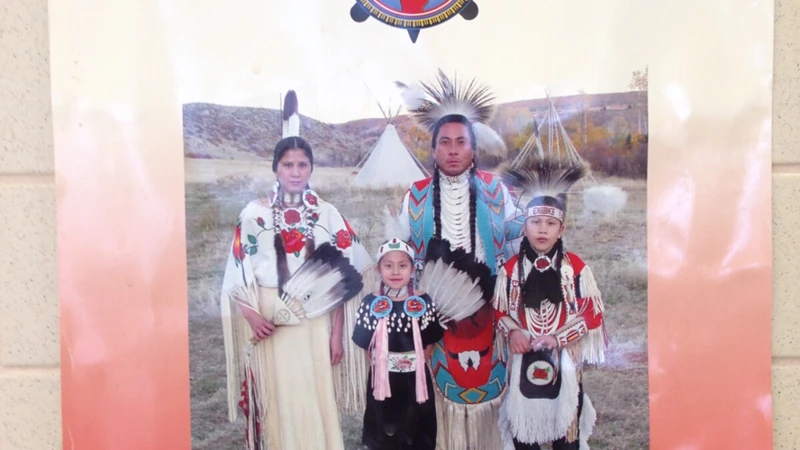
Native American rituals and ceremonies encompass a wide array of practices, each with its own unique purpose and significance. These rituals serve as important cultural expressions and spiritual experiences for Native American communities. One type of ritual is the vision quest, a profound journey undertaken by individuals seeking guidance, revelation, and spiritual growth. During a vision quest, individuals venture into solitude, often in nature, for days or weeks, relying on fasting, meditation, and self-reflection to seek visions and commune with the spirit world. Sweat lodges are another integral part of Native American rituals, involving a steam bath or sauna-like structure used for purification and spiritual cleansing. Participants endure extreme heat while engaging in prayer, singing, and storytelling. Powwows, on the other hand, are vibrant and inclusive gatherings that celebrate cultural heritage through music, dance, art, and storytelling, fostering community connections and honoring Native American traditions. Each of these rituals plays a vital role in the cultural and spiritual landscape of Native American mythology, enriching the lives of those who participate in them.
Vision Quests
Vision quests are deeply spiritual and transformative rituals practiced by many Native American tribes. These quests are undertaken by individuals seeking personal guidance, clarity, and a deeper understanding of themselves and their purpose in life. Vision quests often involve going into seclusion or isolation in nature, such as a remote wilderness area, for a certain duration, which can range from days to weeks.
During a vision quest, the individual fasts, meditates, and engages in prayer or chanting to induce a deep spiritual state. The purpose is to disconnect from the distractions of the physical world and open oneself to receiving visions, messages, and insights from the spiritual realm. This introspective journey allows the individual to confront their fears, face personal challenges, and gain a renewed sense of direction and purpose.
The vision received during the quest is considered a sacred revelation and often guides the individual in making important life decisions or finding their path in life. The visions can take various forms, including encounters with animal spirits, symbolic images, or messages from ancestors or higher beings. Each vision is deeply personal and carries significant meaning unique to the individual undertaking the quest.
The experience of a vision quest is seen as a rite of passage and a spiritual awakening. It is believed to connect the individual to their true essence and foster a deeper connection with the natural world and the spiritual realm. By immersing themselves in nature and engaging in solitude, individuals gain a heightened awareness of their surroundings and their place within the greater web of life.
Vision quests are not undertaken lightly and require careful preparation, guidance from experienced leaders or shamans, and respect for the process. They are considered a sacred and transformative experience, enabling individuals to gain profound insights, clarity, and a deeper connection to their spiritual selves. Vision quests remain an integral part of Native American spirituality and continue to be undertaken to this day as a means of personal growth, spiritual renewal, and finding one’s purpose in life.
Sweat Lodges
Sweat lodges hold great significance in Native American rituals and ceremonies, serving as a powerful means for spiritual purification, healing, and connection with the natural world. Sweat lodges are typically dome-shaped structures created with natural materials like branches, blankets, and animal hides. Inside the sweat lodge, hot rocks are placed in a central pit, water is poured over them, and the resulting steam creates an intense heat, as participants engage in prayer, songs, and introspection.
The steam and heat within the sweat lodge are believed to represent the womb of Mother Earth, providing participants with a symbolic rebirth and a deep cleansing of the mind, body, and spirit. The heat generated induces sweating, which is seen as a way to release negative energy, toxins, and emotional burdens. This purification process is central to achieving spiritual balance and harmony within oneself and with the surrounding environment.
Sweat lodge ceremonies often involve specific rituals and protocols, emphasizing respect, humility, and surrender. Participants typically enter the sweat lodge barefoot and in a state of mindfulness, acknowledging the sacredness of the space and the intention behind the ceremony. As the heat intensifies, participants may embark on a spiritual journey, seeking guidance, clarity, and healing from the divine forces. This experience can be transformative, allowing individuals to confront their fears, heal emotional wounds, and gain a renewed sense of purpose and direction.
The sweat lodge ceremony is also deeply connected to the natural elements. The rocks symbolize the Earth’s strength and endurance, while the steam represents the purifying power of water. The fire used to heat the rocks embodies the transformative energy of the sun. By engaging with these natural elements, participants cultivate a profound connection with the earth, water, fire, and air, recognizing their interdependence with the natural world and their place within it.
It is important to note that sweat lodge ceremonies are sacred and highly respected practices. They should be approached with reverence and under the guidance of knowledgeable and experienced leaders. These leaders, often referred to as shamans or medicine people, hold a deep understanding of the rituals and protocols associated with sweat lodge ceremonies and ensure the safety and spiritual well-being of participants.
In contemporary times, sweat lodge ceremonies continue to be relevant and are often incorporated into healing practices, personal growth, and spiritual retreats. The power of the sweat lodge experience lies in its ability to foster introspection, purification, and a profound connection with one’s spiritual self and the natural elements.
Powwows
Powwows are vibrant and lively gatherings that hold a significant place in Native American culture. These events serve as a celebration of Native American heritage, traditions, and unity. Powwows bring together members from various tribes to participate in cultural activities, such as dance, music, storytelling, and arts and crafts. The atmosphere of a powwow is filled with energy, color, and a deep sense of spirituality.
One of the highlights of a powwow is the traditional dance competitions. Dancers, adorned in intricate and elaborate regalia, perform mesmerizing dances that represent different tribes and their histories. The dancers move rhythmically to the beat of traditional drumming, accompanied by singers who chant powerful songs. The dance competitions not only showcase individual skills but also honor the collective spirit of Native American tribes and their shared experiences.
In addition to dance, powwows are also a platform for showcasing various forms of Native American artistry. Artisans and craftsmen display and sell their handcrafted jewelry, pottery, beadwork, textiles, and other traditional artwork. These crafts often incorporate symbolic elements and designs that hold deep cultural meaning.
Powwows are also an occasion for storytelling, where elders and respected community members share traditional tales, legends, and teachings. These stories impart wisdom, transmit historical knowledge, and reinforce the values and beliefs of the tribe. Through storytelling, the oral traditions and cultural heritage of Native American communities are preserved and passed down to future generations.
The sense of community and belonging is a central aspect of powwows. These gatherings provide a space for Native Americans to come together, forge connections, and strengthen their sense of identity. Powwows foster a shared understanding and appreciation of Native American culture, promoting unity and solidarity within the community.
Powwows are an integral part of Native American culture, serving as joyous celebrations of traditions, art, dance, and spiritual connection. These events allow participants to express their cultural heritage, reinforce their sense of identity, and build relationships within their community. Attending a powwow is a truly immersive experience that offers a glimpse into the vibrant and diverse world of Native American customs and traditions.
Symbolism and Elements in Native American Rituals

Symbolism and elements play a significant role in Native American rituals, adding depth and meaning to their spiritual practices. These rituals often incorporate sacred objects, animal spirits, and natural elements, each carrying its own symbolic significance. Sacred objects are infused with spiritual power and are used to connect with ancestral spirits or deities. These objects can range from feathers and stones to drums and masks, each representing different aspects of the spiritual realm. Animal spirits are also highly revered and seen as guides and protectors. Different animals hold different meanings and qualities, such as the strength of the bear or the wisdom of the owl. Through their presence in rituals, animal spirits are called upon for their attributes and assistance. Natural elements such as fire, water, earth, and air are incorporated into rituals as symbols of life, balance, and harmony. Fire represents transformation and purification, water symbolizes healing and cleansing, earth signifies grounding and stability, and air embodies communication and spirituality. The symbolism and elements used in Native American rituals deepen the spiritual experience and establish a profound connection with the natural and supernatural worlds.
Sacred Objects
Sacred objects hold immense significance in Native American rituals and ceremonies. These objects are considered sacred due to their association with spiritual and mythical elements that hold deep meaning within the culture. They are often revered as conduits between the human and spiritual realms, embodying the essence of the divine.
Here are some examples of sacred objects used in Native American rituals:
1. Feathers: Feathers are highly symbolic and are often used in ceremonial attire and rituals. Different bird feathers may represent various qualities or messages, such as eagle feathers signifying strength and connection to the heavens.
2. Smudging Tools: Smudging is a purification ritual where smoke from sacred herbs, such as sage or sweetgrass, is used to cleanse the energy of individuals, objects, or spaces. The smudging tools, including a smudge stick or smudge bowl, hold sacred significance in channeling healing and spiritual energy.
3. Totem Animals: Totem animals play a vital role in Native American traditions. These animals are believed to embody specific qualities and serve as spiritual guides and protectors. Totem animal symbols are often depicted in various forms, such as carvings, paintings, or masks, and are revered as sacred objects representing a connection to the animal spirits.
4. Dreamcatchers: Dreamcatchers are widely recognized symbols of Native American culture. These intricate hoops adorned with beads, feathers, and woven webbing are believed to catch and filter out negative dreams, allowing positive visions to pass through. Dreamcatchers hold spiritual protection and are often hung near beds or windows.
5. Medicine Bags: Medicine bags are small pouches made of leather or fabric and are considered personal sacred objects. People carry them to hold items of personal significance, such as herbs, stones, or symbols representing their spiritual beliefs and traditions. These bags are believed to offer protection, guidance, and healing.
The use of sacred objects in Native American rituals enhances the spiritual experience and reinforces the connection between the human and divine realms. They serve as tangible symbols of reverence, wisdom, and ancestral heritage. In honoring and utilizing these sacred objects in rituals and ceremonies, Native Americans acknowledge their spiritual lineage and embrace the power and significance they hold in their mythological traditions.
Animal Spirits
The belief in animal spirits holds great significance in Native American rituals and ceremonies. Animals are seen as powerful symbols and sources of spiritual guidance and wisdom. These animal spirits are believed to possess unique qualities and characteristics that individuals can embody or seek guidance from in their lives. The Native American people deeply respect and honor the natural world, including the animal kingdom, and see it as interconnected with their own existence.
In Native American mythology, each animal has its own symbolism and represents specific qualities or lessons. For example, the bear is often associated with strength, courage, and protection. The wolf symbolizes loyalty, unity, and intuition. The eagle represents spiritual enlightenment and connection to the divine. These animal spirits are seen as spiritual guides and teachers, providing individuals with inspiration, support, and insight.
During rituals and ceremonies, Native Americans often invoke the presence and wisdom of specific animal spirits. They may call upon these spirits through prayers, songs, or dances, seeking their guidance and blessings. This connection to animal spirits deepens their spiritual experience, allowing individuals to tap into the animal’s unique qualities and gain a deeper understanding of themselves and the world around them.
The use of animal symbolism extends beyond ceremonies into everyday life for Native Americans. They may identify with certain animal spirits as a reflection of their own personality traits or seek guidance from specific animals during challenging times. The belief in animal spirits serves as a reminder of the interconnectedness of all living beings and the wisdom that can be gained from observing and honoring the natural world.
Animal spirits play a significant role in Native American rituals and ceremonies. These spirits serve as guides, teachers, and sources of inspiration for individuals seeking spiritual connection and guidance. The symbolism and qualities associated with different animals assist in personal growth, self-reflection, and understanding the interconnectedness of all beings. The belief in animal spirits is not only limited to ceremonies but permeates Native American culture, reminding individuals of the profound connection between humans and the natural world.
Natural Elements
In Native American rituals and ceremonies, the use of natural elements is deeply significant. These elements represent the interconnectedness between humans and the natural world, emphasizing the spiritual connection and the belief in a higher power present in every aspect of creation. The inclusion of natural elements in these practices serves to enhance the spiritual experience and foster a deep appreciation for the Earth and its resources.
One of the most prevalent natural elements used in Native American rituals is fire. Fire is seen as a purifying and transformative force, symbolizing both destruction and renewal. The bonfires in powwows and sweat lodges represent this powerful element, providing warmth, light, and a focal point for spiritual ceremonies. Fire is believed to carry prayers and intentions to the heavens, acting as a conduit between the physical and spiritual realms.
Water also holds great significance in Native American rituals. It represents purification, renewal, and the fluidity of life. Many ceremonies involve water in the form of sacred springs, rivers, or lakes, where individuals cleanse themselves physically and spiritually. Water is seen as a source of healing and rejuvenation, symbolizing the life-giving properties that flow through the Earth and sustain all living beings.
Earth is revered as the provider of life and sustenance. The land itself holds sacred energy, and rituals often take place in natural outdoor settings that are regarded as sacred spaces. Native Americans have a deep respect for the Earth, understanding that their well-being and connection to the divine are intricately linked to the health of the planet. The use of sacred herbs, such as sage or sweetgrass, is common in ceremonies, as they are believed to purify and bless the space, creating a harmonious balance between humans and nature.
Lastly, air is seen as the breath of life, symbolizing communication, freedom, and spirit. Wind is considered a messenger, carrying prayers to the heavens and connecting individuals with the spiritual realm. Many rituals involve the use of smoke, such as smudging ceremonies, where herbs are burned and the smoke wafts through the air, cleansing and purifying the space.
In Native American rituals and ceremonies, the incorporation of natural elements serves as a reminder of our interconnectedness with the Earth and the spiritual forces that govern the world. These elements inspire a deep respect for nature, foster a sense of harmony and balance, and reinforce the belief in the sacredness of all creation. By honoring and engaging with natural elements, Native Americans affirm their spiritual connection and continue to preserve their ancestral traditions.
Role of Rituals and Ceremonies in Healing and Balance
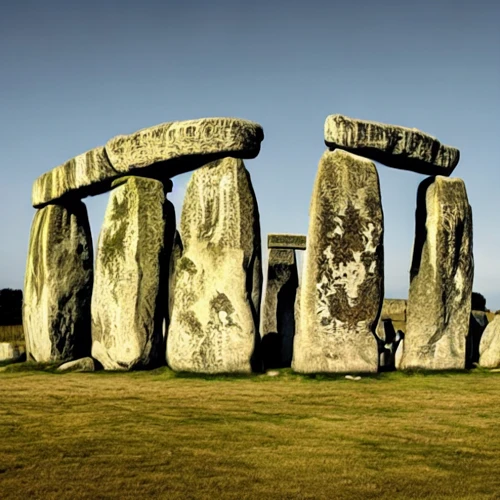
Rituals and ceremonies play a significant role in promoting healing and restoring balance within Native American communities. These practices recognize the interconnectedness of the physical, mental, and spiritual aspects of an individual’s well-being. Through rituals and ceremonies, individuals seek to address imbalances and restore harmony in their lives.
One of the ways in which rituals and ceremonies promote healing is by providing a space for emotional release and catharsis. Many ceremonies involve specific rituals or actions that allow participants to express their emotions, whether it is through dance, song, or prayer. This cathartic release can be immensely healing, allowing individuals to process and release negative emotions, traumas, or burdens that they may be carrying.
Additionally, rituals and ceremonies often incorporate elements of nature, such as fire, water, or herbs, which are believed to possess healing properties. These natural elements are used to cleanse and purify individuals, both physically and spiritually. Sweat lodges, for example, involve the use of steam and heat to promote detoxification and purification of the body, helping to rid individuals of physical ailments and impurities. The use of herbs, smudging, or incense in rituals is also believed to purify the space and promote healing.
Rituals and ceremonies can be seen as rites of passage, marking transitions and transformations in individuals’ lives. These transitions can include important life events such as birth, coming of age, marriage, or even death. By acknowledging and honoring these milestones through specific rituals, individuals are provided with a sense of closure, acceptance, and purpose. This recognition and celebration of life’s transitions contribute to individuals’ overall well-being and their ability to navigate change and challenges.
The role of rituals and ceremonies in healing and balance extends beyond the individual to the community as a whole. Many ceremonies are communal in nature, involving the participation of the entire community. This collective participation fosters a sense of interconnectedness and collective healing. Communities come together and support each other, sharing in the healing process and strengthening their bonds.
Rituals and ceremonies have a profound role in promoting healing and restoring balance within Native American culture. These practices provide a platform for emotional release, incorporate the healing properties of nature, mark important life transitions, and foster communal support. By engaging in these rituals, individuals and communities are able to address imbalances and work towards achieving a state of harmony and well-being.
Contemporary Relevance of Native American Rituals and Ceremonies
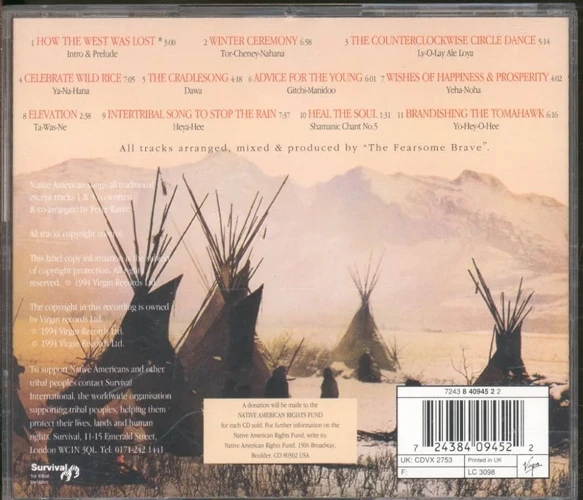
In today’s fast-paced and modern world, Native American rituals and ceremonies continue to hold significant contemporary relevance. These ancient practices offer individuals a way to reconnect with their roots, find inner peace, and restore balance in their lives. As the pressures of modern life take a toll on mental and physical well-being, many people are turning to the wisdom and teachings of indigenous cultures to seek healing and guidance.
One of the ways in which Native American rituals and ceremonies remain relevant is through their healing properties. These rituals offer individuals a space to release negative energy, trauma, and emotional burdens. Whether it is through sweat lodge ceremonies, smudging rituals, or vision quests, participants engage in these practices to purify their minds, bodies, and spirits. The use of specific herbs, sacred songs, and traditional healing methods facilitate a deep sense of cleansing and rejuvenation, promoting overall well-being.
Native American rituals and ceremonies provide a sense of interconnectedness with nature and the environment. In a time when environmental awareness and conservation are critical, these practices serve as reminders of the importance of respecting and honoring the natural world. By incorporating natural elements such as water, fire, earth, and wind into their rituals, Native Americans highlight the sacredness of the Earth and the need for sustainable living. This contemporary relevance of Native American rituals aligns with the growing movement for environmental consciousness and emphasizes the interconnectedness between humans and the natural world.
Additionally, these rituals and ceremonies have gained popularity and are practiced by individuals from diverse cultural backgrounds. People are drawn to the deep spirituality, cultural richness, and profound teachings present within Native American mythology. Powwows, for example, have become vibrant gatherings where people can experience Native American music, dance, and storytelling. These events promote cultural appreciation, cross-cultural understanding, and provide opportunities for intercultural dialogue and exchange.
Native American rituals and ceremonies continue to hold contemporary relevance by offering healing and guidance in today’s stressed and disconnected world. These practices provide individuals with a sense of connection to their cultural heritage, promote holistic healing, and inspire environmental consciousness. The adoption and appreciation of these rituals by individuals from diverse backgrounds further showcase their universal appeal and the enduring significance of Native American mythology in contemporary society.
Conclusion

In conclusion, the rituals and ceremonies in Native American mythology hold immense significance and are deeply woven into the fabric of their culture. These practices serve multiple purposes, including connecting individuals with their spirituality, preserving ancestral traditions, and fostering unity within communities. The spiritual connection established through rituals provides guidance, wisdom, and a sense of protection, enriching the lives of participants. The passing down of traditions ensures that the cultural, spiritual, and historical knowledge of ancestors is passed on to future generations, maintaining a sense of identity and continuity. Additionally, ceremonies play a vital role in marking important milestones and fostering social cohesion within Native American communities. The ritualistic practices, symbolic objects, and natural elements employed in these ceremonies provide a profound experience that promotes healing, balance, and harmony. While contemporary societies have evolved, the relevance of Native American rituals and ceremonies remains strong, serving as a reminder of the importance of reconnecting with the sacred and finding balance in today’s fast-paced world. By honoring and embracing these ancient traditions, we can gain a deeper understanding of ourselves, our connections to the natural world, and our place within the larger tapestry of existence.
Frequently Asked Questions

1. What is the significance of rituals and ceremonies in Native American culture?
Rituals and ceremonies hold great importance in Native American culture as they serve to establish a spiritual connection, preserve ancestral traditions, and foster unity among community members.
2. How do rituals and ceremonies connect Native Americans with their spirituality?
Rituals and ceremonies provide a means for Native Americans to commune with higher powers, seek guidance, and gain spiritual insights, fostering a deeper connection with their spirituality.
3. Why is it important to pass down traditions through rituals and ceremonies?
Passing down traditions through rituals and ceremonies ensures the preservation of ancestral knowledge, cultural values, and historical traditions, maintaining a sense of identity within Native American communities.
4. How do rituals and ceremonies promote unity within Native American communities?
Rituals and ceremonies bring people together in shared experiences, celebrating important milestones, and strengthening social bonds, fostering a sense of unity and solidarity among community members.
5. What are some common types of Native American rituals and ceremonies?
Common types of Native American rituals and ceremonies include vision quests, sweat lodges, and powwows, each with their own unique symbolism and significance.
6. What role do sacred objects play in Native American rituals?
Sacred objects hold deep spiritual significance in Native American rituals, acting as conduits for divine energy, facilitating spiritual connections, and representing cultural and ancestral connections.
7. How do animal spirits factor into Native American rituals?
Animal spirits play a significant role in Native American rituals, symbolizing virtues, wisdom, and spiritual guidance. They are believed to offer protection, strength, and assistance during ceremonies and spiritual journeys.
8. Why are natural elements important in Native American rituals?
Natural elements, such as fire, water, and earth, are considered sacred in Native American rituals, representing the interconnectedness of all living beings and serving as symbols of purification, renewal, and balance.
9. How do rituals and ceremonies contribute to healing and balance?
Rituals and ceremonies provide individuals with a sense of healing and balance by addressing emotional, physical, and spiritual needs, promoting personal growth, and restoring harmony within oneself and the community.
10. How are Native American rituals relevant in contemporary times?
Native American rituals continue to hold contemporary relevance as they provide individuals with a means to reconnect with their cultural heritage, find solace in spirituality, and seek balance and harmony in today’s fast-paced world.
References
Frequently Asked Questions

What is the role of rituals and ceremonies in Native American mythology?
Rituals and ceremonies hold immense significance in Native American mythology as they are seen as pathways to connect with the spiritual realm and the ancestors.
Why are rituals and ceremonies important in Native American culture?
Rituals and ceremonies play a crucial role in Native American culture as they help maintain a spiritual connection, preserve traditions, and foster a sense of community and identity.
What is the cultural significance of rituals and ceremonies in Native American mythology?
Rituals and ceremonies have cultural significance as they embody the spiritual beliefs, values, and traditions passed down through generations, fostering a strong sense of cultural identity.
What is the purpose of vision quests in Native American rituals?
Vision quests are an integral part of Native American rituals, serving as a rite of passage and a means to gain personal insight, spiritual guidance, and a deep connection with nature and the spirit world.
What is the significance of sweat lodges in Native American ceremonies?
Sweat lodges hold great significance in Native American ceremonies as they are believed to cleanse the body, purify the spirit, and promote physical and emotional healing.
What are powwows and their significance in Native American culture?
Powwows are vibrant gatherings that celebrate Native American culture, music, dance, and spirituality. They serve as a means to honor traditions, foster community, and pass down cultural knowledge to future generations.
What are sacred objects and their symbolism in Native American rituals?
Sacred objects hold deep symbolism in Native American rituals, representing spiritual power, connection to the divine, and the presence of ancestors. They aid in invoking spiritual forces during ceremonies.
How do animal spirits play a role in Native American rituals?
Animal spirits are believed to serve as guides, protectors, and sources of spiritual power in Native American rituals. They represent various qualities and teachings that can be called upon during ceremonies.
What natural elements are commonly incorporated into Native American rituals?
Native American rituals often incorporate natural elements such as fire, water, earth, and air. These elements symbolize the interconnectedness of all living beings and the sacredness of the natural world.
Why are rituals and ceremonies still relevant in contemporary Native American culture?
Rituals and ceremonies continue to be relevant in contemporary Native American culture as they help maintain spiritual balance, strengthen cultural identity, and provide a means of healing and reconnecting with ancestral teachings.







